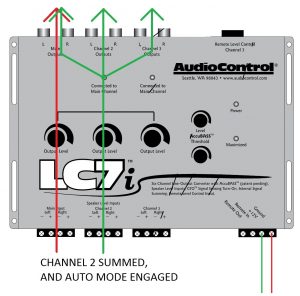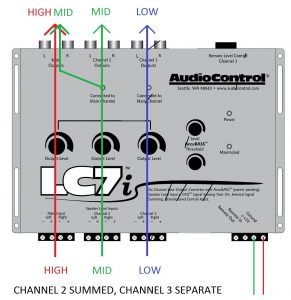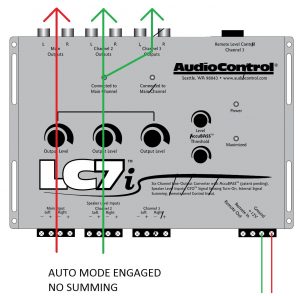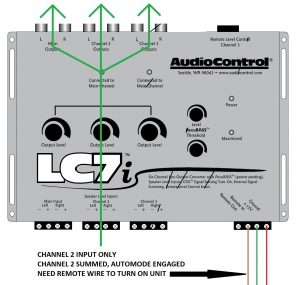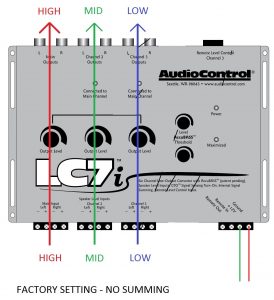The summing function allows you to combine multiple input signals to the main channel output. It is typically most used when connecting to a factory system that has dedicated outputs for just the highs and mids. You can use the summing function to sum those signals to create a full range output. To sum a channel to the main output of a converter, you would need to simply move the summing jumper for the respective channel. You do this by taking the top cover of the converter. For locations of the summing jumper on your converter, please refer to the article here.
***Special Note about Summing***
Summing mode can sum all channels to the MAIN output. It does NOT sum all channels to ALL outputs.
When summing mode is engaged on a given channel, it does NOT cut off that signal to that specific channel output.
Below are some common routing scenarios for the LC7i. These will also be applicable for the LC6i and LCQ-1.
You can find the routing options for the LC8i here.
AutoMode: When there is signal present on the channel 2 input but no signal present at the channel 3 input, AutoMode automatically takes the channel 2 input and routes that signal to the channel 3 output. If you were to connect speaker cables to the channel 3 input, AutoMode would automatically disengage and pass the channel 3 input signal to the channel 3 output.

